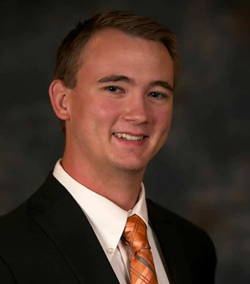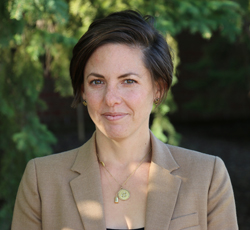Gender Wage Gap

VIN News Service illustration by Tamara Rees
Women now comprise more than half of the veterinary profession, yet their ascendancy in numbers doesn't necessarily correspond with a boost in their pay.
That finding is reflected in a fresh batch of studies by economists, social psychologists and veterinarians, which show that female practitioners still earn less than men in many phases of their career, whether as recent graduates, specialists or practice owners. Precisely what's causing those disparities and how they might be addressed remain contentious questions.
Research on the gender wage gap in veterinary medicine goes back at least as far as 1997, when an economics professor at Pepperdine University published a paper pegging the average income difference between 10% and 15% in favor of men. The American Veterinary Medical Association first identified a gender-based gap in its economic reports in 2003, according to AVMA President Dr. Douglas Kratt.
In the intervening years — as women came to comprise the majority among veterinarians in countries including the United States, United Kingdom and Canada — researchers have continued to keep tabs on income disparities and discrimination. During the past year, at least three new studies have added novel insights to the conversation, such as:
- Practice ownership, particularly sole proprietorship, is less financially lucrative for women than men.
- Among one group of board-certified specialists, women reported 29% lower income in private practice compared with men, and were less likely to own their practice.
- Where gender bias exists, it is most likely perpetuated by those who think it's not happening.
Broad study points to ownership income gaps
One of the most recent studies to investigate pay gaps comes from the Cornell University College of Veterinary Medicine. Published March 15 in the Journal of the American Veterinary Medical Association, the study concludes that the largest source of gender income disparity in the profession can be attributed to female practice owners earning less than male practice owners.
"I wasn't expecting this when I started," said study author Clinton Neill, an assistant professor and veterinary economist at Cornell's Center for Veterinary Business and Entrepreneurship. The disparity, he said, widely has been thought to reflect a simple ownership gap — more men own practices. While that's true, he said, "There is actually a difference in their earnings … That was a piece I felt needed to be clearly stated."
The AVMA-funded study draws on surveys of 2,760 AVMA and American Association of Equine Practitioners members in 2016 and 2017. In addition to ownership, the study examined how experience, specialty certification, location, weekly hours, additional degrees and time away from employment might contribute to the gender wage gap.
Overall, the gap is not prevalent in all areas or for all levels of experience, Neill said, adding that the research shows a lot of income equivalency for 75% of veterinarians. Disparities occur mostly among recent graduates and top earners, according to the study. For those in the highest brackets, the annual average difference is $100,000. That figure reflects total compensation, not just salary, and can include ownership profits.
Still, gaps at any stage add up over a veterinarian's career, and as a result, men are able to accumulate greater wealth than women by retirement, the study points out.
The effect of practice ownership on income described in the paper is complicated. For male veterinarians, researchers identified a significant positive effect of sole proprietorship or partnership on their pay across all income quartiles, except the lowest.
By contrast, for women in the top three income quartiles, only partnerships had a positive effect on income and not sole proprietorships. If women were in the bottom income quartile, they tended to earn less than associates.
"I don't know why that is," Neill said. "That's where more digging needs to happen."
Dr. Samantha Morello, a clinical associate professor of surgery at the University of Wisconsin School of Veterinary Medicine, said the ownership findings disconcerted her. However, she thinks the small sample size could be skewing the results, particularly as regards work experience.
More than 60% of the women surveyed in the gender gap study had fewer than five years of experience, and only 20% had greater than 10 years of experience, whereas 45% of men surveyed had more than 10 years of experience. "I'm not yet convinced that enough people in the sample we've seen here have reached the stage of their career where they're seeing the most returns as represented by their annual income," she said.

Photo courtesy of Clinton Neill
Clinton Neill, a veterinary economist at Cornell University's Center for Veterinary Business and Entrepreneurship, is lead author of a study about a gender wage gap in the profession. Hired last year, Neill is the university's first veterinary economist.
Morello worries that the findings might deter women from pursuing ownership and missing out on the rewards, beyond income. Such benefits include equity, which is an aspect of ownership not necessarily captured in annual earnings, she said. She also points to non-monetary rewards and motivations to own, such as autonomy over schedule, medical decisions and practice philosophy and vision, as well as opportunities to lead and mentor.
"To chalk up the concept of ownership simply to income fails to encompass these motivations," she said. "I hope that a little bit of bad news doesn't stop women from pushing forward to pursue those goals and those heights."
Neill said discouraging women was not his aim. "From my perspective, this study’s purpose was to identify where the gaps exist so that we had research-backed discussions going forward, rather than anecdotal conversations about where the gaps exist," he said. "Now that we know where the gaps truly exist, we can push forward on work to close the gaps."
In his study, Neill also found that becoming a specialist is equally advantageous to women and men, and that time away from work affected men and women equally. The latter finding, Neill said, deviates from expectations and what's characterized in gender-gap literature as "the motherhood penalty."
Kratt at the AVMA said he considers the Cornell study to be comprehensive, thoughtful and important for reopening the conversation.
"We need more research to address the causal factors associated with the gap so that the right policies and actions can be identified and recommended," Kratt said in an emailed statement to the VIN News Service. He included as an example, more research on why female practice owners earn less, especially since practice owners typically establish their own earnings.
"We also need to know how to better support women in the workplace," he added. "For example, what family-centric benefits can practices offer that would appeal to young veterinarians — both male and female — who desire to start a family or who already have small children?"
Specializing does not guarantee equality
The University of Wisconsin's Morello has conducted her own research. In two separate studies, published in 2019 and 2020, she examined how gender affected the personal lives and professional achievements of board-certified veterinary specialists. The first surveyed diplomates of the predominately male American College of Veterinary Surgeons. The second surveyed diplomates of American College of Veterinary Internal Medicine, which skews female and includes cardiologists, neurologists and oncologists.
Morello considers the ACVIM, where 84% of diplomates under age 40 are women, to be a bellwether for the profession because it tracks with overall demographic trends. The ACVIM study found that women in private practice earned 29% less than their male counterparts, and they reported fewer instances of full-time employment or practice ownership. ACVS diplomates surveyed reported similarly, with women earning 25% less than men in private practice.
The fact that the gap is greater in a predominantly female specialty college, she said, illustrates what is sometimes called "occupational feminization," where standard incomes drop as women enter and become a majority in a field. It's unclear what's driving the trend, but researchers suspect a variety of general factors play a role, including lower pay expectations by women, and men who are deterred by bad pay.
Dr. Samantha Morello

Photo courtesy of Dr. Samantha Morello
Dr. Samantha Morello, an associate professor at the University of Wisconsin College of Veterinary Medicine, has been studying the impact of gender on personal life and professional achievement among board-certified veterinary specialists.
Reflecting on the gap, Morello considers that the motivation of women to earn more might correlate other gender-based worker characteristics, such as their financial obligations at home. "Only 47% of women, compared with 73% of men, responded that they were primary earners in their households," Morello wrote in the ACVIM study, "suggesting differences in financial responsibilities that may exist as a driving force for generating income."
The role of production-based pay in practice income is another critical factor that deserves attention, Morello said. Many practices offer ProSal compensation, which is production-based pay on top of a guaranteed base salary. Men, Morello posits, could be earning more because they're processing clients more methodically but not necessarily more effectively.
"It's the tests that you order, the surgery that you do, the procedure you perform, which isn't always indicative of the value you provide," she said. "The time you spend with clients in an exam room, the attention to detail, the effort you put into your communication or your paperwork — [these] might improve your patient outcome, your client satisfaction, the ability of your client to follow their medical orders."
However, communication and attention to detail are aspects of practice that can be monetarily undervalued. Morello pointed to a corollary in human medicine, where one study showed that female physicians see fewer patients, spend more time with them and are paid less than male physicians.
"In human health care, they are searching for compensation models based around value-based care," Morello said. "On a philosophical level, maybe that is something we can think about."
The role of bias
The Cornell study did not directly examine how gender bias — the conscious or unconscious belief that qualifications and competence are tied to gender — might impact pay discrepancies among female veterinarians, but it has been on Neill's mind.
"It's fundamental to the discussion of gaps," he said. "We know that bias does play a role in hiring and pay. However, it's hard to measure. I can explain much of the gender wage gap, but I can't explain all of it. We leave that to bias."
Morello believes bias often is given too much credit for driving the wage gap.
"I do think that bias still exists in veterinary medicine for women at many different levels," she said, "but I think that its explicit effect on income is not nearly as frequent as many consider it to be and, therefore, it may only be a limited part of what we see in the income gap."
She pointed to a study published last year led by Christopher Begeny, a social psychologist at the University of Exeter in England. The study focused on veterinary medicine to examine gender bias in a formerly male-dominated profession where women have made substantial gains in representation.
In the first part of the study, veterinarians were asked if they experienced gender discrimination at work, on a one-to-five scale, one indicating "never" and five indicating "frequently." The average response was 2.08 for women and 1.58 for men, which, Morello said, "doesn't suggest that discrimination is a terribly common event — or at least it is not recognized as such very frequently."
Begeny discouraged reading too much into the results because "individuals don't have to be aware of gender bias for it to negatively affect them," he said in an email to VIN News. What’s more, the results were intended to provide, according to the study, "initial evidence that despite notable gains in women's representation in this field, experiences of gender bias may persist" — not to characterize how widespread people’s impression of bias is.
The second part of the study aimed to test for corroborating experimental evidence. It featured a randomized, double-blind experiment looking at the role that perceptions of bias might play in the expression of bias.
Presented as a British Veterinary Association study of management practices, the researchers provided employee profiles to business owners, employers and managers. Two were identical in every detail except in the name — Mark or Elizabeth — to indicate gender. The participants were asked to evaluate employees' competence and to make salary and career recommendations.
After completing the review of profiles, the managers were asked if they believed the statement, "Discrimination against women in the veterinary profession is no longer a problem." The results: 44% said they believed the statement, 41% rejected it, and 15% were neutral or uncertain. Men were significantly more likely to endorse the statement, and women were more likely to reject it.
The study found that those who believed that gender discrimination is a non-issue in the profession were more likely to judge Mark as significantly more competent than Elizabeth, and advised paying him more. The authors noted that the gap in recommended pay found in the study mirrors an actual pay gap in veterinary medicine in the U.K., approximately 8% for junior full-time veterinarians.
"It is vital to recognize that discrimination can persist — perpetuated by those who think it is not happening," the study said.
The researchers urged further exploration of what drives people to believe that gender bias no longer exists. In particular, they wonder if seeing increasing numbers of women in the field fuels the belief that gender bias is an outdated problem.
The study said: "Finding that this belief becomes more likely or prominent when women's representation perceptibly grows would illustrate how gains in women's representation — a very real and notable stride toward equality — can also give way to an insidious belief that undermines equality."
The story has been revised to provide additional context for Christopher Begeny’s study.